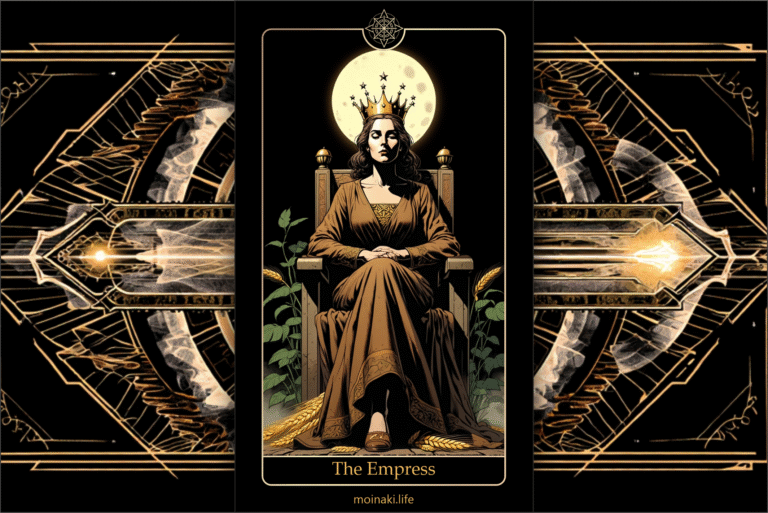The Tower
Few tarot cards provoke a reaction quite like The Tower. Its imagery—lightning striking a tall, proud structure, people tumbling from the heights, chaos unleashed—often stirs anxiety or apprehension. Yet, beneath this dramatic surface, The Tower offers a unique opportunity for growth, resilience, and self-discovery, especially for those facing crossroads or deep inner change.
Context and Symbolism of The Tower
In the classic tarot deck, The Tower stands tall against a dark sky, struck by lightning. Flames pour from windows, the crown at its top is blasted away, and figures fall headlong into the unknown. This scene isn’t about punishment—it’s about sudden revelation.
The Tower represents moments when our foundations are shaken, not out of malice, but as an invitation to rebuild more authentically. Life, after all, is full of structures: beliefs, routines, relationships, even our self-image. Sometimes, these become rigid or outdated. The Tower reminds us that clinging to what no longer serves can lead to sudden, dramatic change—sometimes from within, sometimes from outside circumstances.
“You can’t heal what you don’t reveal. The Tower’s lightning is the flash of truth that brings hidden patterns to light.”
Key Meanings: Upright and Reversed
Upright: Sudden Change, Awakening, Revelation
- Disruption: Unexpected events shake your assumptions or disrupt your plans.
- Awakening: Truths are revealed, sometimes painfully, but with the power to free you from illusions.
- Breaking Down: Old structures, beliefs, or habits that are no longer helpful are being dismantled.
- Release: Emotional or psychological breakthroughs can occur, clearing the way for healing.
In its upright position, The Tower is about the necessity of change—even if it feels uncomfortable or frightening at first. The pressure builds until something gives way, clearing space for new growth.
Reversed: Resistance, Lingering Upheaval, Avoidance
- Fear of Change: You may be holding onto outdated beliefs or situations, delaying necessary transformation.
- Suppressed Upheaval: Internal turmoil that is denied or avoided, leading to anxiety or stagnation.
- Gradual Realization: Insights come slowly, or changes occur in less dramatic, but still significant, ways.
- Opportunity for Preparation: The reversed Tower can signal the chance to make changes with intention instead of waiting for crisis.
When reversed, The Tower often suggests the energy of upheaval is still present, but may be expressed as anxiety, denial, or a slow, simmering process rather than sudden shock.
Psycho-Emotional Application: Embracing Change and Self-Discovery
The Tower’s lesson is deeply psychological: it asks us to examine what we have built our lives upon—our core beliefs, patterns, and comfort zones. When life’s “lightning” strikes, it may feel like chaos, but it’s also an invitation to update our inner architecture.
Why Do We Fear The Tower?
Many people—especially those who feel vulnerable or are in a period of transition—see The Tower as a warning rather than an opportunity. This is understandable; change is rarely easy, and uncertainty can be overwhelming.
But consider: What if the collapse of what’s familiar is actually the first step toward healing? Sometimes, our old coping mechanisms or limiting beliefs—while once necessary—become blocks to growth. The Tower’s energy can help us spot these blocks and, with courage, start to dismantle them.
“When you feel like everything is falling apart, it may be that your life is falling together in a new, truer way.”
Self-Development Insights
- Self-Awareness: Use moments of upheaval as opportunities to reflect on what truly matters to you. Which parts of your life feel unstable, and why?
- Letting Go: Practice releasing attachments to routines, relationships, or self-images that no longer feel supportive.
- Resilience: Remember that real strength comes not from rigid defenses, but from the willingness to adapt and grow.
In therapy or self-reflection, The Tower can be a companion card for those working through trauma, life transitions, or breaking free from toxic cycles. Its message is not “brace for disaster,” but “trust the process of radical transformation.”
Concrete Steps: Working With The Tower’s Energy
1. Naming Your Foundations
Take a few minutes to write down the beliefs or routines you rely on most. Ask yourself: Are these truly serving me, or am I holding on out of habit or fear?
2. Identifying Resistance
- Notice where you feel the most resistance to change. Is there a fear of loss, failure, or the unknown?
- Practice gentle self-inquiry: “What am I protecting by holding on to this?”
3. Mindful Disruption
Not all transformation has to be chaotic. Consider making small, intentional changes in areas where you sense stagnation. This could be as simple as altering your daily routine, setting a new boundary, or speaking your truth in a relationship.
4. Grounding Techniques During Upheaval
- Breathing exercises: When you feel overwhelmed, pause and focus on slow, deep breaths.
- Body awareness: Notice sensations in your body—this helps anchor you in the present.
- Journaling: Write about your experiences of change and what you’re learning from them.
5. Seeking Support
Major transitions are hard to navigate alone. Reach out to a trusted friend, therapist, or support group. Sharing your process can bring new perspectives and emotional relief.
Final Thoughts
The Tower is not a card of doom, but a reminder that sometimes, the walls we build to protect ourselves also keep us stuck. When those walls come down, it’s an invitation to step into a new chapter—one shaped by greater authenticity and self-compassion.
Tarot is not fortune-telling — it’s a mirror for reflection and growth.

